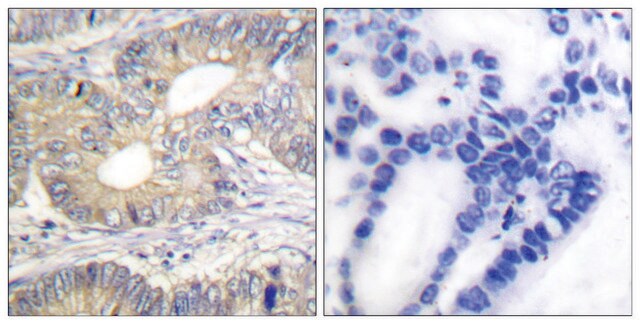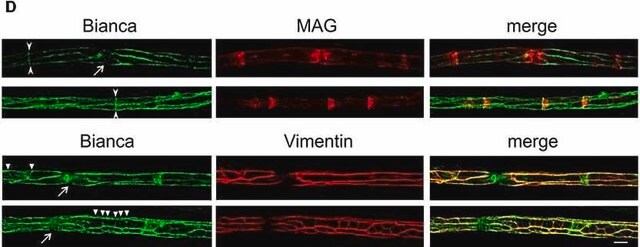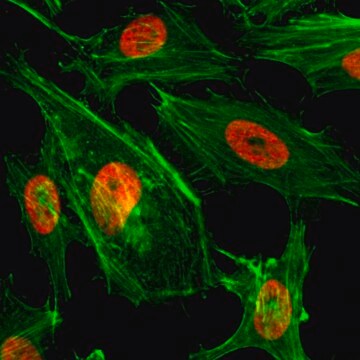MAB1049
Anti-Bone Morphogenetic Protein 4 Antibody, clone 3H2
clone 3H2, Chemicon®, from mouse
Sinónimos:
BMP-4, DVR-4
About This Item
Productos recomendados
origen biológico
mouse
Nivel de calidad
forma del anticuerpo
purified immunoglobulin
tipo de anticuerpo
primary antibodies
clon
3H2, monoclonal
reactividad de especies
rat, human, mouse
fabricante / nombre comercial
Chemicon®
técnicas
ELISA: suitable
immunocytochemistry: suitable
western blot: suitable
entrada
sample type neural stem cell(s)
sample type mesenchymal stem cell(s)
isotipo
IgG2b
Nº de acceso NCBI
Nº de acceso UniProt
Condiciones de envío
wet ice
modificación del objetivo postraduccional
unmodified
Información sobre el gen
human ... BMP4(652)
mouse ... Bmp4(12159)
rat ... Bmp4(25296)
Descripción general
Especificidad
Human BMP-4 (accession number P12644) precursor (389 aa, glycosilated) consists of a propeptide (273 aa) and active BMP-4 (116 aa, glycoslyated; MW reduced 17-20 kDa).
Inmunógeno
Aplicación
Western blot using osteoinductive cells; i.e., BFP and Saos-2
Optimal working dilutions must be determined by the end user.
Stem Cell Research
Mesenchymal Stem Cells
Descripción de destino
Forma física
Almacenamiento y estabilidad
Nota de análisis
Mouse brain extract
Otras notas
Información legal
Cláusula de descargo de responsabilidad
¿No encuentra el producto adecuado?
Pruebe nuestro Herramienta de selección de productos.
Código de clase de almacenamiento
10 - Combustible liquids
Clase de riesgo para el agua (WGK)
WGK 2
Punto de inflamabilidad (°F)
Not applicable
Punto de inflamabilidad (°C)
Not applicable
Certificados de análisis (COA)
Busque Certificados de análisis (COA) introduciendo el número de lote del producto. Los números de lote se encuentran en la etiqueta del producto después de las palabras «Lot» o «Batch»
¿Ya tiene este producto?
Encuentre la documentación para los productos que ha comprado recientemente en la Biblioteca de documentos.
Nuestro equipo de científicos tiene experiencia en todas las áreas de investigación: Ciencias de la vida, Ciencia de los materiales, Síntesis química, Cromatografía, Analítica y muchas otras.
Póngase en contacto con el Servicio técnico





